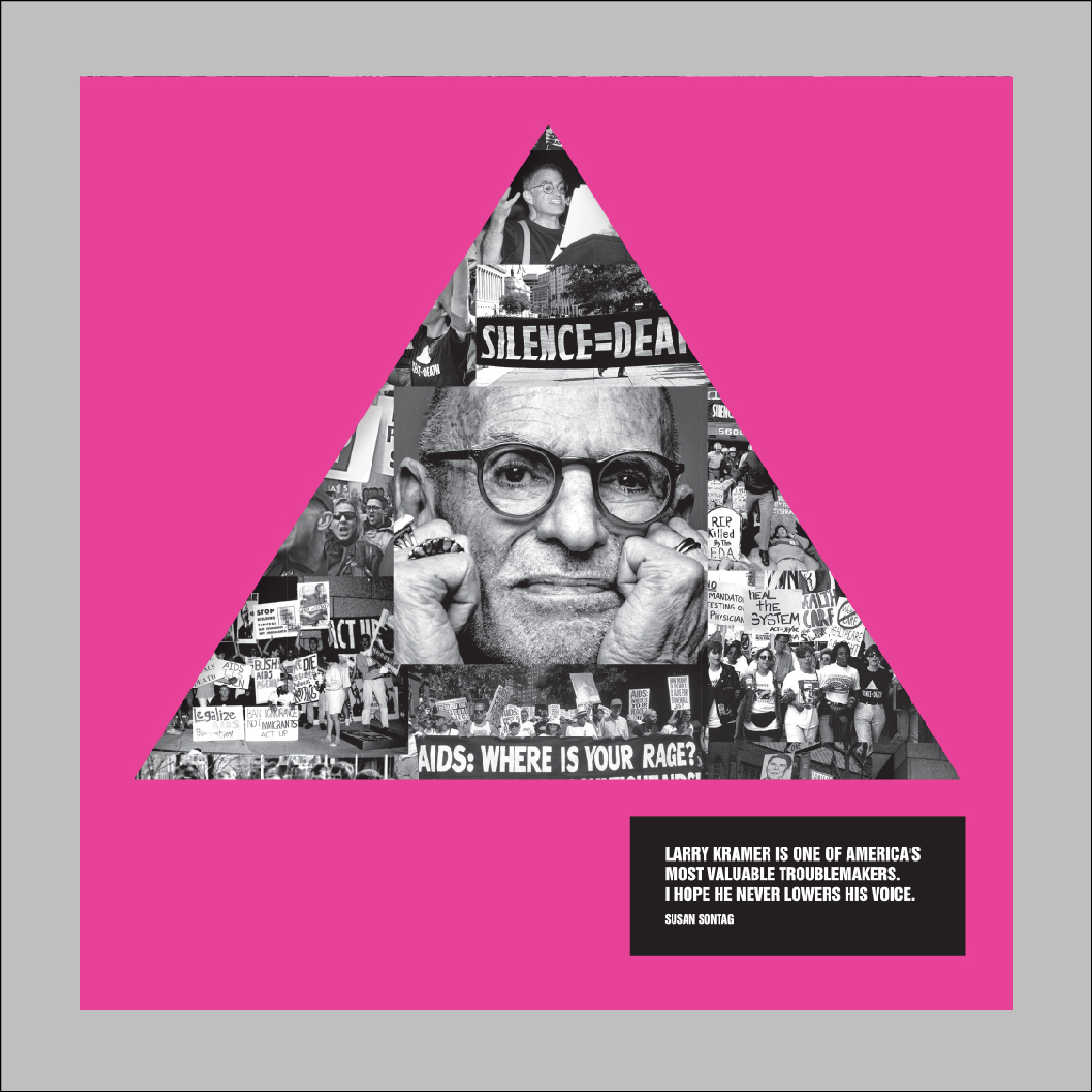Exploring Virtual Village Voices, Part 6: Larry Kramer, Helen Levitt, and Edna St. Vincent Millay
In 2021 and 2022, Village Preservation developed an innovative outdoor public art exhibition that was displayed throughout Greenwich Village, the East Village, and NoHo. VILLAGE VOICES featured photographs, artifacts, and soundscape recordings to celebrate and honor the artistic, social, political, and cultural movements that have grown in our neighborhoods, and the people who gave them voice.
We have now made those exhibits permanently available online. Today we explore three more of our 31 shadowboxes from the event: Larry Kramer, Helen Levitt, and Edna St. Vincent Millay.
Larry Kramer
On August 11, 1981, pioneering gay-rights activist and author Larry Kramer hosted a meeting of friends at his 2 Fifth Avenue apartment that led to founding the Gay Men’s Health Crisis (GMHC), the first AIDS advocacy and support organization, less than a year later. By 1987, however, Kramer had become frustrated with the group’s passivity amid ongoing threats to gay equality and increasing numbers of AIDS victims. His impassioned and well-attended speech on March 10 at the LGBT Community Center at 208 West 13th Street was the spark that resulted in the creation of the AIDS Coalition to Unleash Power (ACT UP), a grassroots activist group that through civil disobedience focused attention on the inaction of government agencies and corporations in fighting the disease. Both GMHC and ACT UP were groundbreaking organizations that demanded real change in how government, the media, and the private sector approached the AIDS crisis and addressed the life-or-death needs those afflicted faced.
In addition to his advocacy work, Kramer authored the plays The Normal Heart (1985) and The Destiny of Me (1992), the latter earning two Obie Awards; the controversial book Faggots (1978); and the screenplay for Women in Love (1969), which receiving an Academy Award nomination.

Narrating the audio is actor and playwright David Greenspan.
Helen Levitt
In the mid-1930s, Helen Levitt purchased a Leica camera to photograph the transitory chalk drawings that were part of New York’s street culture at the time and the children who made them. Thus began her artistic career that spanned nearly seven decades capturing the playful dance of street life in the East Village and beyond, as well as the working-class people and mischievous children that were both her subjects and her neighbors. Levitt’s discreet shooting style enabled her to reveal a spontaneity and intimacy, blending the poetic and the political in images that ultimately shaped the genre of street photography itself.
Renowned figures in the photographic and literary communities — such as Henri Cartier-Bresson, Walker Evans, and James Agee — were in her cohort of admiring contemporaries and friends, but Levitt stood out from the crowd through her warm and discerning photos within our physical urban communities. Depicting the whimsy of ordinary street life, Levitt captured wondrous, seemingly impossible moments of the dance of life in the street and the unrestrained bonds of community.

The audio is narrated by Jeffrey Rosenheim, the Metropolitan Museum of Arts’ Joyce Frank Menschel curator in charge of the photography department.
Edna St. Vincent Millay
Born in Maine, poet and playwright Edna St. Vincent Millay was seemingly destined to be associated with Greenwich Village: her middle name honors the hospital that once stood on West 11th Street near Seventh Avenue, where her uncle’s life was saved just before she was born. A lover of poetry from an early age, Millay graduated from Vassar College in 1917 and soon moved to Greenwich Village just as it was becoming known as a Bohemian writer’s haven. (She lived at several addresses in the neighborhood, including 75½ Bedford Street, known as the narrowest house in the city.)
The Village’s restless and nonconformist environment helped inspire Millay to declare a distinct identity for herself and to craft pieces that defied common convention. Thought of as the embodiment of the “new woman” in the 1920s, she combined modernist and traditional forms in her poetry to write of love for both men and women. Her 1923 piece “The Ballad of the Harp Weaver” earned her a Pulitzer Prize for poetry. Millay was also a playwright: the Provincetown Players performed two of her theatrical works, Aria Da Capo and Two Slatterns and a King, and she wrote the libretto to an opera in three acts that premiered on February 17, 1927, at the Metropolitan Opera.

Narrating the audio is Leslie Mason, a member of Village Preservation’s Board of Trustees and co-curator of VILLAGE VOICES.
